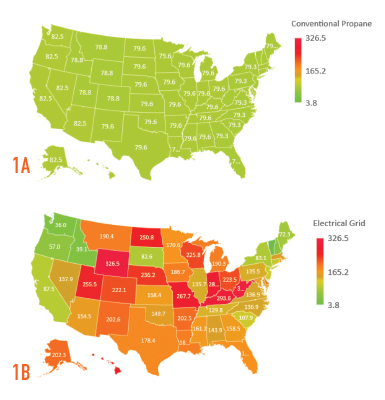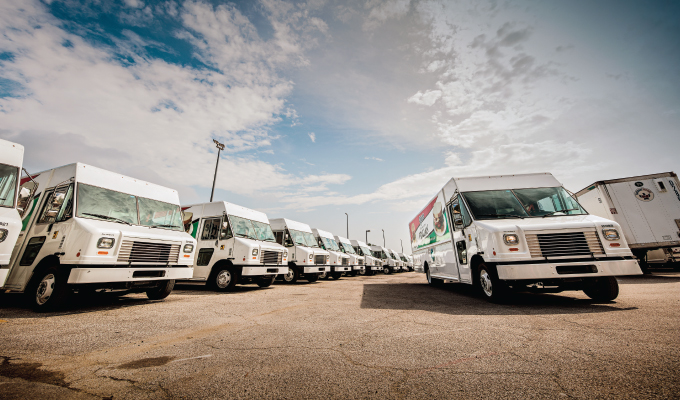By Steve Whaley
When it comes to emissions, most fleet owners only consider what’s happening at the tailpipe since that’s what they’re directly responsible for. In fact, some fleets are even starting to transition to “zero-emissions” vehicles, like EVs, in an effort to curb their emissions. But what many haven’t considered is what’s happening beyond the tailpipe.
While there are certainly good intentions behind transitioning to a “zero-emissions” vehicle fleet, that action may be short sighted. To truly understand how a fleet impacts the environment, fleet owners have to factor in all of the emissions that go into creating the energy source that is powering the vehicle.
A new study is debunking the common perception that EVs are “zero-emissions” vehicles and offer the lowest emissions in medium- and heavy-duty fleet vehicles. In most of the United States, propane autogas produces fewer emissions than comparable electric vehicles. As the study shows, there is no such thing as a “zero-emissions” vehicle.

EVALUATING EMISSIONS
In a comparative analysis conducted by the Propane Education and Research Council, researchers found propane-powered medium- and heavy-duty vehicles provide a lower carbon footprint solution in 38 US states and Washington, DC when compared to medium- and heavy-duty EVs charged using the electric grid in those states. This is due to the amount of carbon that is produced from each state’s energy mix for electricity generation using coal, petroleum, or other energy sources. In addition, battery production is significantly energy and carbon intensive.
While electric vehicles may have zero tailpipe emissions, emissions are generated prior to the wheels turning on the road through the electric grid and the powertrain (chiefly battery manufacturing) production. When comparing the difference in life-cycle equivalent carbon dioxide (CO2eq) emissions of a single medium-duty vehicle, propane autogas on a national average emits 125 tons of CO2eq less than an electric medium-duty vehicle.

LOOKING FORWARD
It’s true that the electric grid is going to keep getting cleaner as new technology becomes available. However, it’s important to point out that propane autogas is also getting cleaner by leaps and bounds through new engine developments and renewable propane.
Renewable propane is a byproduct of the renewable diesel and sustainable aviation fuel production process, which converts plant and vegetable oils, waste greases, and animal fat into fuel. It has the same chemical structure and physical properties as conventional propane and can be used in any existing propane autogas engine. Because it’s produced from renewable raw materials, renewable propane has an even lower carbon intensity than conventional propane and is far cleaner than other energy sources.
As such, the study found when renewable propane is considered, propane-powered MD-HD vehicles currently provide a lower carbon footprint solution in every US state except one where most of its electricity is generated by hydroelectric power plants.

COST-EFFECTIVE
At the end of the day, emissions reductions also have to be cost-effective for fleets to be able to implement these new solutions. Fleet owners that choose propane autogas don’t have to worry. When you factor in the cost of a new vehicle, regardless of fuel type and the costs for fuel, fluids, maintenance, and repairs, propane autogas has the lowest cost of any fuel for the lifetime of the vehicle.
The incremental capital cost for a medium-duty propane autogas vehicle, relative to its gasoline or diesel counterpart, is on average 15%. Comparatively, a similar medium-duty EV is over 250%. Not to mention, the cost to purchase and install refueling equipment for a fleet of medium- or heavy-duty propane autogas vehicles is lower than the cost to purchase fast charger equipment for charging a comparable electric vehicle fleet in a comparable time frame.
As the future of transportation becomes even cleaner, I implore fleet owners to take a moment to see for themselves why propane autogas is an important energy solution for our environment.
ABOUT THE AUTHOR
Steve Whaley is the director of autogas business development for the Propane Education & Research Council. He can be reached at stephen.whaley@propane.com. Find out more, visit www.propane.com/research-development.




